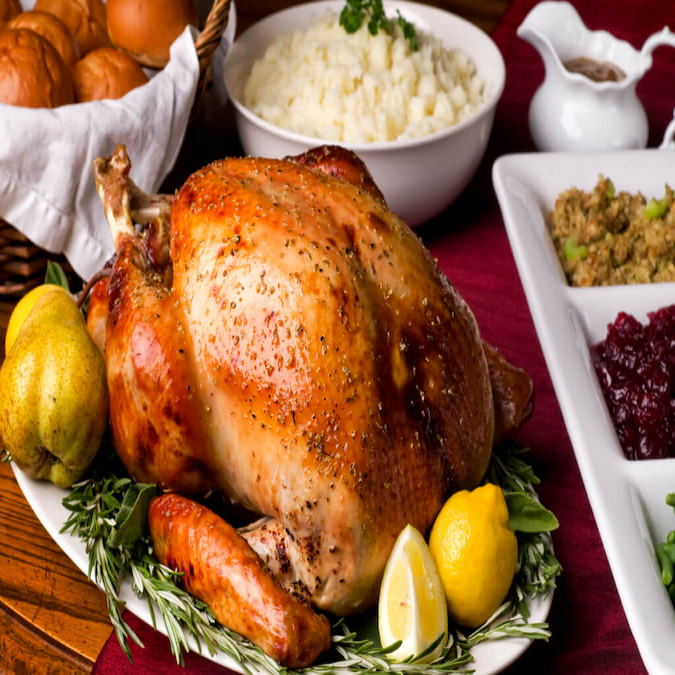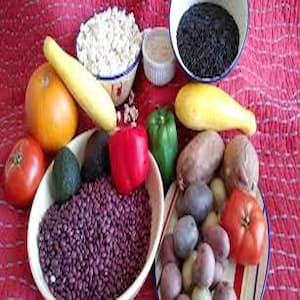Christmas Traditions in The United States
The Historical Roots of Christmas Celebrations
Christmas in the United States grew from a complex blend of old-world customs and new-world reinventions. Early Puritan settlers approached the holiday with restraint, while later waves of German and Irish immigrants carried with them songs, rituals, and festive foods that gradually reshaped the season. By the 19th century, Christmas had blossomed into a time of carols, gifts, evergreen trees, and abundant feasts. Even Santa Claus, twinkling in store windows and children’s imaginations, emerged from this merging of global traditions into something distinctly American.
Regional Variations in Holiday Customs
Across the country, Christmas resembles a communal table where each region contributes its own cherished dish. In the Northeast, Italian-American families gather for the Feast of the Seven Fishes, while in the South, celebrations often revolve around soul food and the warmth of shared hospitality. The Midwest embraces cookie-decorating gatherings that spill into the evening, and the West welcomes a mosaic of cultural influences, from coastal seafood to inventive, health-minded creations. Each region adds its own flavor, shaping a national holiday defined not by uniformity but by joyful variety.
USA Christmas Traditional Food, Christmas Dishes Across Different Regions in The United States
Northern States: Traditional Roasts and Comfort Foods
In the chill of the Northern winter, Christmas meals are built to warm the spirit. Tables often showcase generous roasts—prime rib, lamb, or a carefully prepared bird—paired with mashed potatoes, rich gravies, and the familiar tang of cranberry sauce. These dishes create a sense of comfort that lingers long after the snow outside settles into silence, offering a pause from the cold and an invitation to savor the moment before rising for a second helping.
Southern States: Barbecue and Soul Food Influences
Christmas in the South carries the aroma of slow-cooked meats and deeply rooted traditions. Hams, ribs, and brisket may emerge from barbecue pits, while soulful sides—collard greens, cornbread, candied yams—fill the table with color and memory. Desserts such as pecan pie and sweet potato pie provide a sweet finale, each bite steeped in history and hospitality, turning the meal into a gathering that feels like home.
Western States: Fusion Flavors and Unique Ingredients
In the Western states, Christmas cuisine reflects the region’s spirit of experimentation and cultural diversity. A holiday table might feature wild game, fresh seafood, sushi platters, or even a festive spread of tacos. Avocados, citrus, and Pacific flavors mingle freely, creating meals that feel both inventive and inviting. Here, the holiday feast becomes an exploration—a celebration of creativity where tradition is honored, but imagination leads the way.
Why Turkey Is the Backbone of Traditional American Christmas Cuisine
Turkey may be rooted in Thanksgiving, but it has quietly extended its wings into Christmas, settling comfortably at the center of many winter tables. Juicy, often brined, and brushed with family-kept blends of spices, it arrives surrounded by gravy, stuffing, and every familiar fixing. Whether it appears as a gentle echo of Thanksgiving or a deliberate reprise, turkey remains a steadfast symbol of celebration—a bird that understands both gratitude and togetherness.
READ ALSO: Timeless American Christmas Dishes to Bring the Magic of the Season Right to Your Holiday Table
Ham: The Sweet and Savory Centerpiece
Ham enters with its own flourish, a shimmering glaze catching the glow of holiday lights. Maple, brown sugar, perhaps a whisper of cloves—its sweetness meets a savory depth that draws lingering glances long before the first slice is served. It is a dish that seems to announce the season all on its own, and its leftovers extend the magic into quiet post-holiday mornings, where sandwiches become small rituals of comfort.
USA Christmas Traditional Food, Popular Side Dishes, and Their Significance

Classic Stuffing and Dressing Variations
Stuffing is the dish that stirs loyalties across generations. Whether nestled inside the turkey or baked on its own, it holds the essence of herbs, bread, and sometimes sausage—a warm mosaic of textures and memories. Every family adds its own signature, from the simple charm of traditional herb stuffing to the rustic sweetness of cornbread or the earthy elegance of wild rice. It is a dish capable of sparking debate, yet it brings everyone back to the same table in the end.
Vegetable Dishes: From Green Bean Casserole to Roasted Roots
Vegetables lend balance to the richness of the feast. The green bean casserole, its crown of crisp onions intact, offers comfort in every spoonful, while roasted roots bring their muted colors and earthy warmth to the plate. These dishes serve as gentle reminders that even amid indulgence, there is room for simple nourishment. They stand quietly among the grandeur, steady and grounding.
USA Christmas Traditional Food, Favorite Holiday Desserts and Sweets
Traditional Pies: Pumpkin, Pecan, and Beyond
Dessert in the American holiday tradition often begins with pies. Pumpkin brings the familiar whisper of spice; pecan offers a deep, caramel-rich embrace; apple stands proudly, its aroma filling the room with nostalgia. Each pie brings its own story, but the true moment of triumph comes when a scoop of vanilla ice cream melts slowly across a warm slice, binding all flavors in soft harmony.
Cakes and Cookies: Holiday Baking Traditions
The season is incomplete without the soft rustle of cookie tins and the fragrance of fresh baking. Gingerbread figures, intricate in their decorations, share space with powdered snowball cookies that vanish almost as soon as they appear. Cakes rise to the occasion as well—red velvet with its quiet drama, or the yule log, crafted as though it were a gift in itself. Holiday baking becomes a shared ritual, a place where creativity meets tradition, and even a simple cookie-decorating contest can unfold like a painted memory, sweet and fleeting.
USA Christmas Traditional Food, Unique Cultural Influences on Christmas Cuisine
Italian-American Influences: Feast of the Seven Fishes
For many Italian-American families, Christmas Eve unfolds in the glow of the Feast of the Seven Fishes—a tradition that is less a meal and more a lingering celebration of the sea. Table after table fills with salted cod, shrimp scampi, and other ocean treasures, each dish carrying its own quiet reverence. Homemade pasta often joins the spread, its familiarity anchoring the briny elegance of the seafood. Even the delicately stuffed calamari seems to whisper stories of ancestry, turning the evening into a culinary bridge between past and present.
Latino Traditions: Tamales and Posole
Across Latino communities, Christmas is marked by the warmth of tamales and the comforting depth of posole. Tamales, crafted through hours of shared labor, arrive wrapped like small gifts, filled with savory meats, melted cheese, or sweet surprises. Posole, rich with hominy and layered with history, is served with crisp cabbage, radishes, or a bright squeeze of lime. Together, these dishes transform the holiday into a tapestry of flavors and family traditions, each bite illuminated by heritage.
USA Christmas Traditional Food, Modern Twists on Classic Christmas Recipes
Health-Conscious Alternatives to Traditional Dishes
In many homes today, the holiday table embraces balance as cooks reimagine classic comfort foods with thoughtful care. Sweet potato casseroles are crowned with pecans rather than marshmallows, and acorn squash brims with quinoa and cranberries. These dishes remain rooted in tradition, yet they offer a lighter touch—an invitation to savor without excess, blending wellness with celebration.
Global Influences: Incorporating International Flavors
American Christmas cuisine has become a reflection of the world’s diversity, alive with international inspiration. A ham may shimmer beneath a teriyaki glaze, while stuffing might carry the warm hum of Moroccan spices. The holiday table becomes a place where borders soften and creativity leads, encouraging families to wander through new culinary landscapes while honoring familiar comforts.
USA Christmas Traditional Food, The Importance of Family Recipes and Traditions
Passing Down Recipes Through Generations
Family recipes move quietly through time, preserved in stained index cards, whispered instructions, and well-loved cookbooks. Each one holds a fragment of a story—a grandmother’s secret ingredient, a father’s careful touch, a cherished moment in a kitchen long gone. These recipes tether generations to one another, ensuring that memory and flavor remain intertwined.
Making New Traditions: Blending Old and New
As families grow, so do their traditions. Vegan dishes may appear beside treasured roasts, or breakfast may transform into pancakes shaped like evergreen trees. These new touches, woven into the fabric of long-held rituals, keep the holiday table alive and evolving. In the end, Christmas is shaped as much by the people gathered as by the dishes served—each meal a reflection of heritage, change, and shared joy.
As we gather to celebrate, the foods we share nourish more than the body. They carry the weight of history, the warmth of connection, and the promise that each holiday season will bring both comfort and discovery. Through old recipes and new inspirations, Christmas meals continue to grow, delight, and bind us to one another.
USA Christmas Traditional Food, FAQ
What are some common traditional dishes served for Christmas in the USA?
Many families enjoy turkey, ham, stuffing, mashed potatoes, green bean casserole, and a variety of desserts such as pumpkin pie and Christmas cookies.
How do Christmas food traditions vary across different regions in the USA?
Regional traditions reflect local culture and history, such as the Southern love of cornbread dressing and collard greens, or the Italian-American Feast of the Seven Fishes.
Can I incorporate modern dietary preferences into traditional Christmas meals?
Yes. Many families adapt classic dishes to suit vegetarian, vegan, gluten-free, or health-conscious preferences so that everyone can share in the celebration.
What is the significance of family recipes during Christmas?
Family recipes act as culinary heirlooms, carrying memories, stories, and cultural identity. They help connect generations and preserve traditions through the simple act of sharing a meal.



